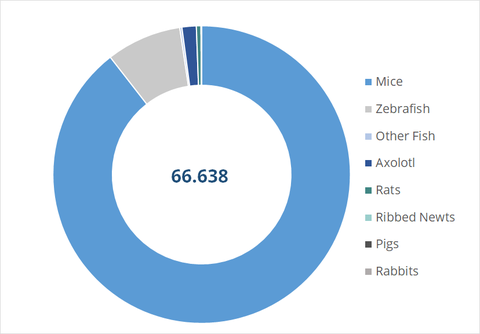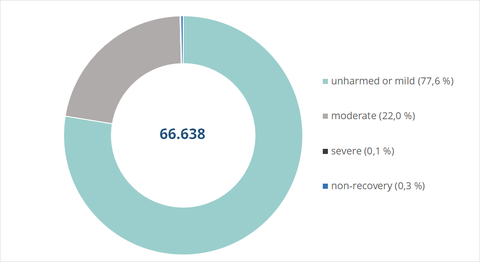Animal research at TU Dresden – Facts & Figures
Table of contents
Laboratory animals at TU Dresden
Type and numbers
We only use species as model organisms that are close enough to humans to ensure reliable and transferable results. The majority of the animals listed below are bred and used exclusively for the production of cells.
Do the animals suffer?
Examples from research: What animal research at TU Dresden has made possible
Especially in medicine and the life sciences, animal research is often necessary to develop effective treatments or to undertake basic research without putting people at risk.
Optimizing mechanical ventilation
Mechanical ventilation, often used for acute respiratory distress syndrome (ARDS) and severe cases of COVID-19, is life-saving but carries a risk of lung damage. A Dresden research group was able to optimize the process and to minimize the risks with the help of animal research. The researchers worked with pigs for this purpose, which are particularly suitable as a model organism in this case because they are comparable to humans in terms of lung physiology. The pigs were given general anesthesia and then placed on mechanical ventilation. The researchers were able to observe the strain on the lungs and draw important conclusions about ventilation in humans.
Understanding the causes of bowel cancer
Approximately half a million people in Germany are diagnosed with cancer each year, and more than 230,000 die from it. Bowel cancer is one of the most common forms of cancer. Understanding why and how it is caused is crucial to improving prevention and treatment. In experiments with mice, researchers were able to show how certain body signals change the intestine in such a way that bowel cancer can develop. Mice are widely used as model organisms because their genetics are 95 percent identical to those of humans, and many diseases in humans and mice have similar genetic roots.
Regeneration: Fundamental research for new treatments
A spinal cord injury can have dramatic consequences. In Germany alone, an average of more than 2,300 people suffer from paraplegia every year. Research on fish is raising hopes of a cure. Some species can regenerate the nerve cells of their spinal cord after an injury, whereas in mammals only the myelin sheath grows back. At TU Dresden, scientists are researching the mechanisms that make this possible. Using zebrafish, for example, they were able to show that the precursor cells in the spinal cord of mammals and fish are very similar, but react differently when injured. Understanding why this is the case is a prerequisite for developing new therapies for humans, which in the best case could even enable the regeneration of injured spinal cords.
Novel materials and treatments for bone healing
While simple bone fractures are usually easy to treat, the treatment of extensive bone defects remains difficult. New biomaterials and medicines are promising, but need to be tested on other mammals before they can be used on humans. The complex interaction of many different cell types cannot be fully reproduced in cell culture experiments. TU Dresden and the University Hospital usually use rats for these experiments. In a typical test, a 3 mm long piece of the femur is removed under general anesthesia. The ends are fixed with a small metal plate and screws that have been developed for hand surgery in humans. The bone replacement materials and healing agents to be tested are then inserted into the resulting gap in the bone. While the animals are healing, they are closely monitored and given painkillers in their food for as long as necessary.


